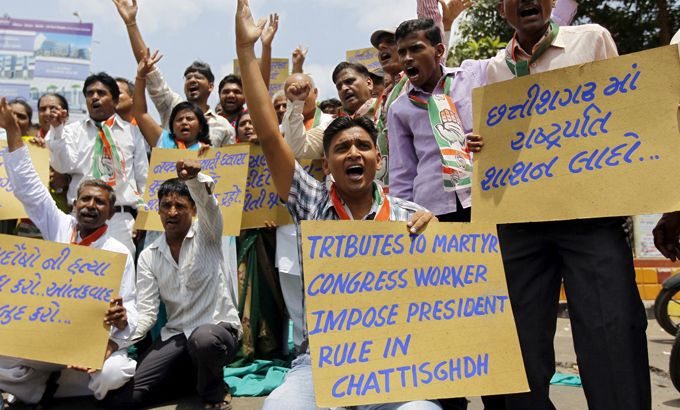
How will India respond to Maoist rebels?
After an attack on state officials causes simmering tensions to flare, we ask if a military response is the only option.
The Indian government is preparing for an all-out anti-Maoist offensive following attacks last Saturday, in which several top Congress Party leaders were killed in Bastar.
At least 19 people were killed when a convoy was ambushed in a dense forest, and the Maoists, also known as Naxals or Naxalites, are threatening to carry out more attacks.
The Maoists are inspired by the communist ideology of China’s late Chairman Mao Zedong.
”It
but [it is] a typical Indian response – that after the horse has bolted, you lock the stables. This is a response only to placate the people who have been affected.”]
They have been fighting India’s federal and provincial governments for more than four decades, demanding land and jobs for the poor and often marginalised farmers. That includes the Adivasi – indigenous tribal people who live off the land.
Ten years ago, 35 families from the Baiga tribe left their homes in the hills of Chattisgar state and moved to the plains. They did so because the state government was developing the area and asked them to move.
They were told they would own the land in their new settlement, and were promised running water, electricity and roads. But none of it materialised. And now they are once again being driven out.
The Maoists today comprise some 40,000 members who are present, to varying degrees, in 21 out of India’s 28 states. In some areas, they even run their own courts and levy taxes on local traders.
They are most active in what is known as the ‘Red Corridor’, which stretches from Andhra Pradesh in the south to West Bengal in the east.
Last week’s daring attack has thrown a spotlight on the government’s failure to deal with the Maoist rebels.
Critics say the government’s strategy towards the Maoists has been weak and unsympathetic. Activists say the solution lies in sharing land resources with locals.
And while there have been talks between the Maoists and the government, the most recent were in 2010; the rebels’ offer was rejected by the government.
So, while the Indian government tries to put down an insurgency it considers to be its greatest internal security threat, we ask: Is a military response the only option? And what will this mean for the world’s biggest democracy?
To discuss this, Inside Story, with presenter Hazem Sika, is joined by guests: Ashok Mehta, a retired Indian army general; Rani Singh, a South Asia security analyst; and Kishalay Bhattacharjee, a journalist and specialist on the Maoist rebel movement.
|
“There is a sheer incoherence in the government’s policy towards this particular situation. The prime minister of India, each year in his address to the chief ministers of the country, he has been reiterating the first paragraph of that lecture every year since 2006 that the Maoist, or the left-wing extremism, is India’s biggest internal security challenge. If this is India’s biggest internal security challenge, then surely he and his government should have been able to do something about it.“ – Kishalay Bhattacharjee, journalist |